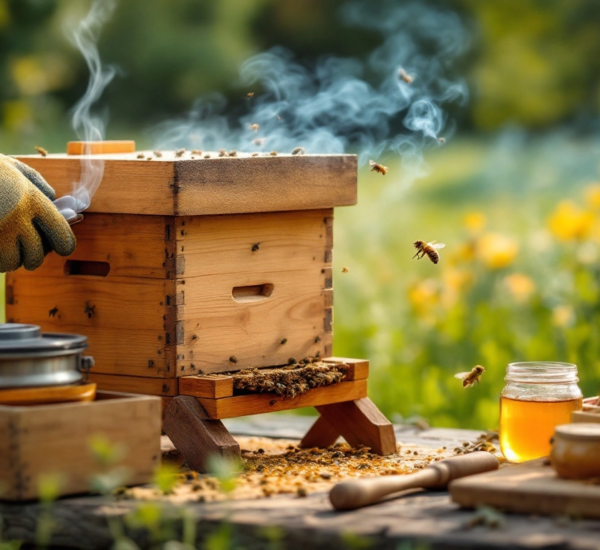Imagine transforming your compact backyard or rooftop into a bustling beehive teeming with life, where you produce your own honey while playing a vital role in supporting local biodiversity. Urban beekeeping isn’t just a hobby—it’s a powerful movement that connects individuals with nature amidst the concrete jungle. Whether you’re a curious beginner or someone eager to take action, this urban beekeeping guide will walk you through the essentials: how to start, the necessary equipment, the rules you need to follow, and the incredible benefits it brings to your life and community.
Table of Contents
- What is Urban Beekeeping?
- Urban Beekeeping for Beginners: Getting Started
- Essential Urban Beekeeping Equipment
- Understanding Urban Beekeeping Laws & Regulations
- The Environmental and Personal Benefits of Urban Beekeeping
- FAQs About Urban Beekeeping
What is Urban Beekeeping?
Urban beekeeping, as the name suggests, involves maintaining beehives in urban areas like city backyards, rooftops, or balconies. As more people recognize the importance of pollinators in combating environmental decline, this practice has gained significant traction in cities worldwide.
The Role of Urban Beekeeping in Pollinator Conservation
Pollinators like bees are essential to our ecosystem, but their populations have dwindled substantially due to habitat loss and pesticide use. Urban beekeeping fosters pollinators by providing them safe habitats and abundant urban flora, strengthening biodiversity.
How Urban Beekeeping Differs from Traditional Beekeeping
Unlike beekeeping in rural areas, urban beekeeping faces unique challenges, such as space constraints, stricter regulations, and maintaining harmony with neighbors. However, urban environments often offer diverse and nutrient-rich forage thanks to local gardens and parklands.
Urban Beekeeping for Beginners: Getting Started
Starting your journey as an urban beekeeper can feel overwhelming, but breaking it into manageable steps simplifies the process. Here’s how you can dive in:
Choosing the Right Location for Your Hive
Your hive’s location is critical. Look for a spot with sufficient sunlight, minimal wind, and easy access to nectar-rich plants. Rooftops, balconies, or secluded garden corners work well, provided there’s enough space for the bees to come and go freely.
Key Considerations Before Starting (Space, Time, Neighborhood Rules)
Urban beekeeping requires thoughtful planning. Consider if your space can accommodate hives without bothering neighbors. Be sure you can dedicate enough time to hive management, and check local neighborhood rules to avoid legal or logistical conflicts.
Basic Costs Involved in Urban Beekeeping
The initial urban beekeeping setup costs approximately $300–$500, depending on the hive type and equipment. Regular expenses, like sugar syrup for feeding and protective wear, are relatively minimal. The personal satisfaction and ecological impact far outweigh the cost.
Essential Urban Beekeeping Equipment
Proper equipment ensures your safety and the health of your hive. Here’s a breakdown of the essentials:
Hive Types and Their Suitability in Urban Environments
The two most popular hive types are Langstroth hives and top-bar hives. Langstroth hives are stackable and efficient for honey production, while top-bar hives are compact and beginner-friendly, making them ideal for urban settings.
Personal Protective Gear You’ll Need
Invest in quality protective gear, including a bee suit, gloves, and a veil. These shield you from stings and allow you to work with your bees confidently.
Must-Have Tools for Hive Management
Key tools include a smoker (to calm bees), a hive tool (to open and maintain the hive), and a bee brush (to gently move bees without harm). These tools make hive inspections smooth and efficient.
Understanding Urban Beekeeping Laws & Regulations
As rewarding as urban beekeeping is, adhering to local laws and regulations is essential. Beekeeping laws vary by location, so it’s crucial to stay informed.
Key Legal Considerations for Urban Beekeepers
Legal requirements typically revolve around hive placement, colony size limits, and proper hive maintenance. Familiarize yourself with these rules to avoid fines and conflicts with neighbors.
Local Licensing Requirements in Different Cities
In many cities, urban beekeepers are required to obtain permits or register their hives with local authorities. Check with your municipality for specific licensing requirements.
Steps to Comply with Zoning and Safety Laws
Ensure your hives comply with urban zoning laws, which may dictate safe distances from roads, schools, or neighboring properties. Some areas also recommend or require bees’ access to water sources.
The Environmental and Personal Benefits of Urban Beekeeping
Urban beekeeping isn’t just good for the environment; it also offers personal rewards and contributes to sustainable living. Here’s how:
Supporting Biodiversity and Enhancing Green Spaces
Urban bees pollinate local plants, flowers, and gardens, creating thriving green spaces. This support for biodiversity has a ripple effect on the health of the broader ecosystem.
Producing Local Honey and Other Hive Products
One of the joys of bee stewardship is harvesting fresh, chemical-free honey and other hive products like beeswax and propolis. It’s a sweet reward for your hard work!
Building a Mindful Connection with Nature
Caring for bees fosters mindfulness and patience, helping urban beekeepers reconnect with the natural world amidst the hustle and bustle of urban life.
Frequently Asked Questions
What are the basic requirements for urban beekeeping for beginners?
As a beginner, you’ll need a safe location for your hive, essential equipment, proper protective gear, and an understanding of local laws governing beekeeping.
Is urban beekeeping safe in densely populated areas?
Yes, urban beekeeping is safe as long as you follow best practices, such as placing hives appropriately, using protective gear, and maintaining a healthy and calm bee colony.
What benefits does urban beekeeping bring to local communities?
Urban beekeeping fosters pollination, supports local biodiversity, and enhances green spaces, benefiting both the environment and the community at large.
How much space do I need for urban beekeeping?
Even small spaces like rooftops or balconies can suffice. Ensure there’s a suitable flight path for the bees and adequate room for your hive and tools.
Does urban beekeeping require a lot of time?
While it requires regular monitoring and maintenance, urban beekeeping is manageable for most people, requiring just a few hours a month once set up.
Conclusion
Urban beekeeping is a fulfilling endeavor that not only benefits pollinators and enhances local biodiversity but allows for personal growth and sustainable living. Whether you’re just starting your journey or looking to transition into rooftop beekeeping, use this urban beekeeping guide as a roadmap for success. Research your local regulations, gather your urban beekeeping equipment, and take the first step toward becoming an urban beekeeper today.
Ready to dive deeper into the world of beekeeping? Subscribe to our newsletter for exclusive tips and resources to make your beekeeping journey rewarding and impactful!




